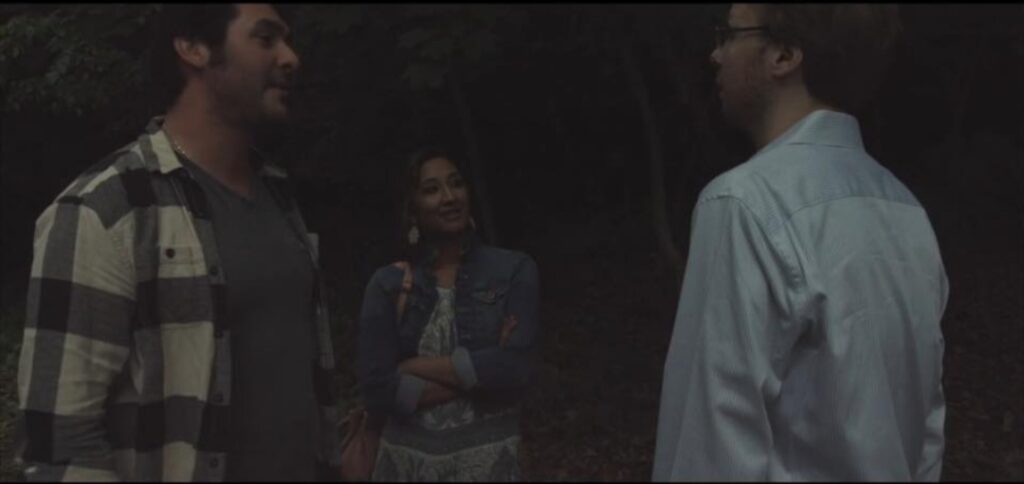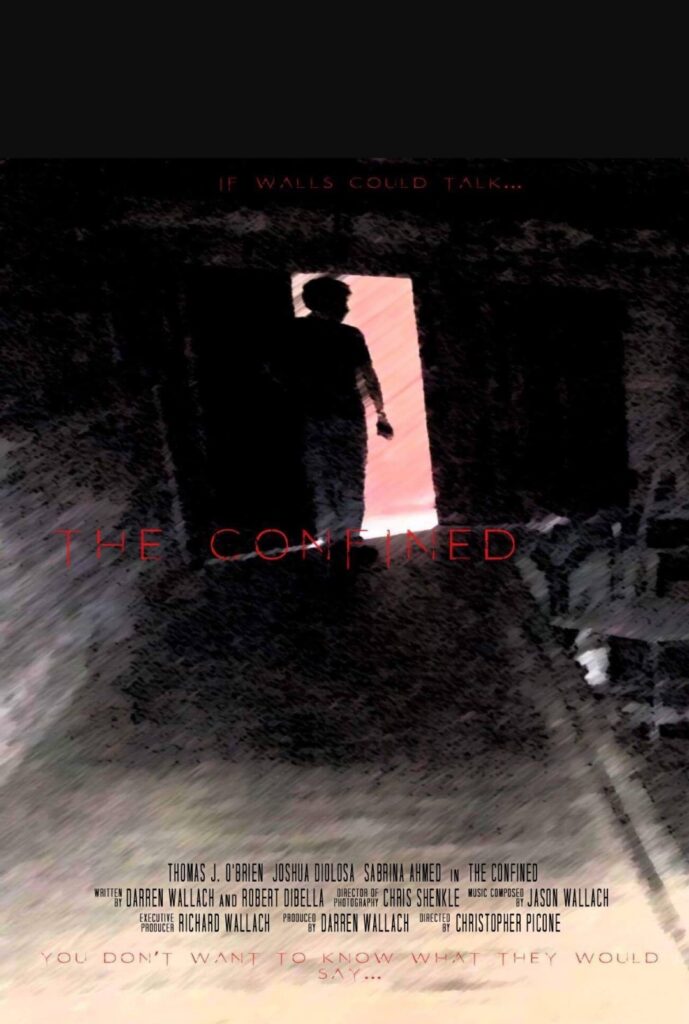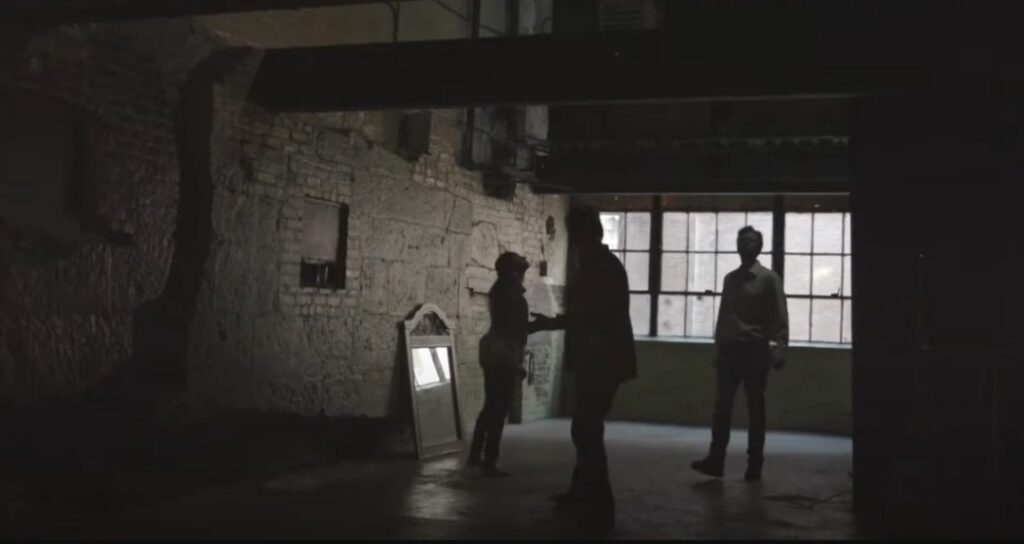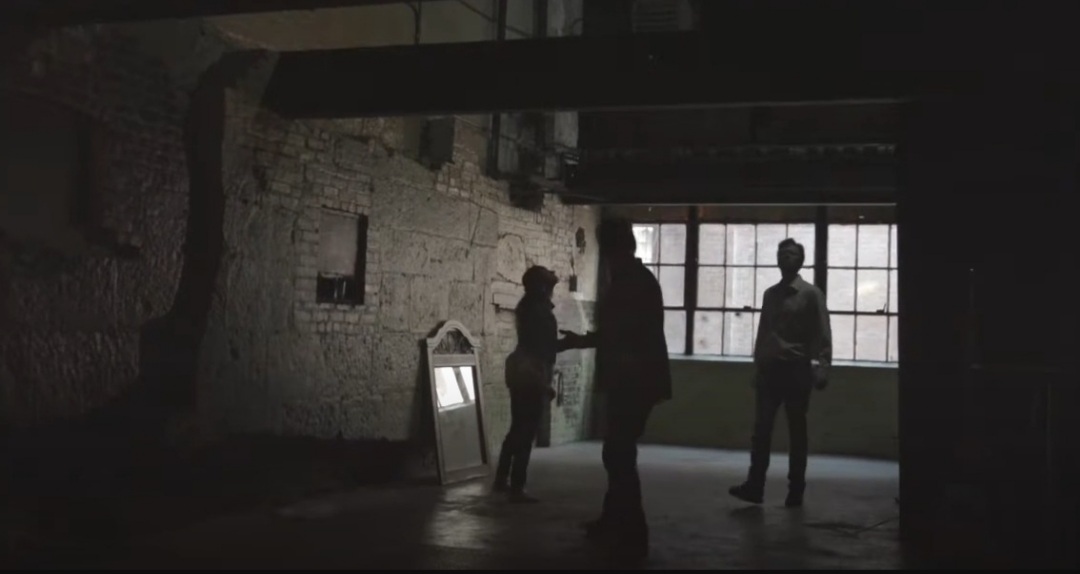The Confined is a horror/thriller short film, directed by Christopher Picone. At just under 6 minutes long, the film passes by in the blink of an eye. The compact runtime requires precise filmmaking with fast characterization, instant immersion in the setting, and some immediately striking images. On this criteria, the film ultimately fails, but it is not without some redeeming elements.
The film leans on well-established horror tropes, the ghost story and the haunted house, but updates them for the present day. It asks what atmosphere remains in a building within which there has been a violent and traumatic past; what is it that echoes through the architecture and lingers in between the walls? The Confined, however, struggles to find its footing as the characters meander somewhat aimlessly from room to room talking vaguely and inconsistently about the building’s past events, present atmosphere and their plans for its future renovation. The film doesn’t create a visceral response, despite alluding to horrifying material, in large part due to its dialogue and framing.

The Confined has a backstory as confusing as it is mysterious. We are introduced to a stately building on the banks of the Hudson River. In 1946, the building was the site of a “grisly murder”. At the end of WWII, George Gale, a former SS Officer, moved into the building (his connection to the previous murder is not stated). Then, in 1975, Gale’s cult of neo-Nazi followers were executed in the building by local authorities. It has been abandoned ever since. We are also told that an old man killed himself after participating in a satanic ritual and that many other people disappeared (again the exact connections between the events are unclear). There are a lot of aspects to deal with simultaneously, in such a short runtime, and the film buckles under this burden.
The main story begins in the present day when two architects, Landry (Thomas J. O’Brien) and Kelly (Sabrina Ahmed), and a property developer, Donnie (Joshua Diolosa), arrive to survey the building and discuss the prospects for turning it into lucrative condominiums. Donnie is the driving force behind the redevelopment project, incessantly bringing things back to money. He is a somewhat bizarre symbol of corporate interests, though his arguments don’t immediately strike you as being particularly insightful or nuanced. The performance by Diolosa is energetic, while failing to really convince you of his character’s supposed expertise or charisma. Donnie’s enthusiasm is met by Kelly’s ambivalence and Landry’s outright disinterest.
We initially see the three characters through a window: the camera is placed within the building and pans with them as they walk up the path. There is clearly something—a person, a force, a threat—waiting for them as they arrive. This voyeuristic shot generates intrigue, though it is cut away from too quickly and isn’t a point of view that the film returns to again. The rest of the film is instead shot using more conventional two and three person shots that, at times, lack adequate composition. Dialogue is often delivered by characters with their backs to the camera, while bodies are not always framed properly and are frequently cut off without obvious reason.

The Confined struggles most with dialogue and illogical story development. There is a frequent disparity between words and actions, and, though there isn’t much time for real character development, the characters still lack fundamental substance and consistency. Attitudes and reactions change rapidly between scenes, even across seconds of screen time. This is particularly the case with Kelly’s character. Her description of the building goes from cool to creepy without any hint of irony or self-awareness. There are also inconsistencies in regards to how much information the characters know about the building. Landry, for example, is surprised by the state of the building, calling it a dump, but has also been made privy to the George Gale neo-Nazi backstory which states the same building has been abandoned since 1975. This aside from the fact that the exterior of the building actually looks impressive on screen.
There are some redeeming elements. Namely, the use of dark building interiors is effective. The locations, particularly inside the building, are well chosen and do create interesting settings for the conversations between characters. You certainly get a sense of the cavernous hallways and staircases within which the terrifying events must have taken place. The conclusion of the film, while not executed to a particularly high technical level, does offer some sufficiently terrifying disorientation. The ending sequence has some of the most memorable images in the film, though it is a challenge to understand how it fits into the logic of the rest of the story.
The Confined is an underwhelming horror that struggles to live up to its setting, which is both striking and eerie. The film doesn’t pack a visual punch to really horrify, as shot compositions are uneven at best, nor does the film sufficiently build tension through sound design and editing. The final sequence feels somewhat disconnected from the rest of the film, but it is more inventive and experimental—making for a more enjoyable watch. The Confined, with its sprawling backstory, alludes to much, without really addressing much at all.


